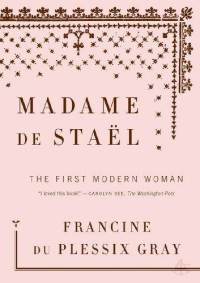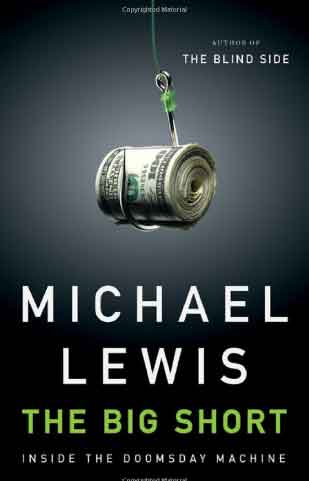Hello you. Welcome to my external brain. Some people call it a blog.
Speaking of blogs, I was at a blogging conference this weekend.
Northern Voice, I’ve been to every one and it is my favourite conference. The diversity is striking compared to other conferences, and I think that’s part of its charm. Northern Voice is a personal blogging conference, which means people talk about biodiversity in nature, the legal aspects of the internet and what doing social good means. Flip charts and powerpoint are kept to a minimum.
Below are my random thoughts that I’d like to recall at a later date. You can stop here if you wish.
Academic podcasting
Appears to be mostly the re-purposing of lectures and that’s not a great form of learning. If I ever teach a course, I will remember this.
SoundCloud looks like a very cool tool for sharing audio/podcast clips. There’s a dropbox that you can put on a MySpace page or other site that let’s people drop audio tracks for you and grab yours. Plus there’s a nice embeddable widget telling visitors listen to your stuff. Might be a good tool for a regular Boxcar Marketing podcast or for course lectures.
Watch the 3-min. video on Soundcloud.
Online Publishing and the Law
Dan Burnett is a leading defamation and media lawyer in Canada. He teaches media law at the UBC graduate school of journalism, was lead counsel in a ground breaking Supreme Court of Canada case which revised the law of fair comment to better recognize free speech, and represents web publishers on a wide range of defamation and related issues.
Dan talked about how traditional journalists have insurance and legal teams, but bloggers are exposed.
He also had some key points on Defamation and Libel.
Defamation is any negative statement about someone.
Repeating a libel is a libel.
Avoid making a negative statement framed as truth if you do not have the evidence to back up that statement.
You can identify that someone is making this claim (insert) and that I disagree because (insert).
Quoting someone else does not protect you. Again repeating a libel is a libel. You can, however, quote a statement in privilege (statements made in official proceedings because those are documented, recordable quotes).
Be aware of court cases because they’re landmines for publication bans. Just avoid it. If you’re so compelled, make sure to consult Courts.gov.bc.ca, which has a court ban search.
Citizen journalism and reporting on this that are a matter of public interest are, of course, highly valuable activities. There’s “responsible communication”, which I took to understand to be that if an allegation is of public interest, whether it’s true or not, then you can make that statement in public interest. Although the intricacies of how this works escapes me.
There is also neutral reportage, where you report a statement, say it’s unverified, and you’ve give the person it’s against a chance to respond.
The implications of blogging, even privately, are high. Everyone who participates in a publication is a publisher.
Published is defined as 1 other person sees it.
You can avoid defamation:
1. If it’s opinion, and it’s clear that it’s an opinion.
2. If you avoid negative statements of fact that you can’t prove. Don’t say, for example, Gordon Campbell is an alcoholic, unless you have substantial proof.
3. “In my opinion” helps.
But you can’t say, “In my opinion Gordon Campbell is an alcoholic.”
4. Truth defense.
I missed what this is but I assume that if the statement is true and you can undoubtedly prove it to be true, go for it.
5. Privilege (protects fair accounts of official proceedings and their docs)
6. New defense of “responsible communication:” If something is in the public interest, you can report it responsibly. This means you must give that person a chance to respond before you go public with the story.
7. Don’t take lessons from American examples. Free speech is very different here.
8. Beware of libel tourism.
Sophisticated plaintiffs will seek the best jurisdiction where the laws are in their favour. Celebrities, for example, go to England to sue. There they are a public figure and the laws are different. They can win a lawsuit in England that they would not be able to in the US.
You can be sued anywhere in the world where your publication is available. But practically, if you don’t have assets in that jurisdiction, then it’s difficult for them to collect.
Other things I learned:
The person suing doesn’t have to prove damages.
Are you liable for hyperlinks?
If the link acts as a footnote, there’s no liability unless the accompanying words endorse the libel found on the linked site.
You can’t say, “For the dirty truth on X, click here.”
Public domain is when the author has been dead 50 years. Public domain is not because it’s on YouTube.
Fair dealing only applies to news or criticism or private study. You are required to credit the source. Non-excessive use is met. The rules are slightly different for satire, parody, and commentary, but the legal restrictions in Canada are quite limiting.
Parody and satire is not fair dealing in BC.
David Ng: The structure of a great presentation
David Ng always gives a great presentation. I think this is because he knows how to tell a story. Perhaps he’s internalized Tod Maffin’s presentation on what “IT” is.
He starts with a scientific question.
Then tells a story that establishes a universal truth, in this case that the “actual size” is not as seen on the package.
Next makes the connection between that scientific question and the narrative.
In this case he’s talking about what’s actually happening in the interwebs vs what’s talked about a lot, as if it’s happening.
Great intro. Great setting the stage.
Now on to what we want to talk about. Biodiversity and science and how crowdsourcing and the internet can be used to create opportunities for wider learning.
Next up: audience participation, keep the brain paying attention to David.
David shows us a photo of a bird
Who knows what it is?
Eight of us know that it’s a European starling. An invasive species here in BC that is everywhere.
Now, who knows what this is?
Many more hands are raised with the photo of a Pokemon character.
Oh dear.
The purely fictional has greater recognition than an invasive species that’s in our face every day. Yes, here is another universal truth.
So how can we combine widespread understanding and knowledge of things spread through the internet with scientific discovery and understanding?
David introduces The Phylomon Project. Very cool.
We leave with a clear set of tasks for participating and understanding scientific study.
1. See something
2. Think of a reason why
3. Figure out a way to check your reason
and?
4. Now, everyone gets to dump on you
5. Repeat until consensus is formed



















































